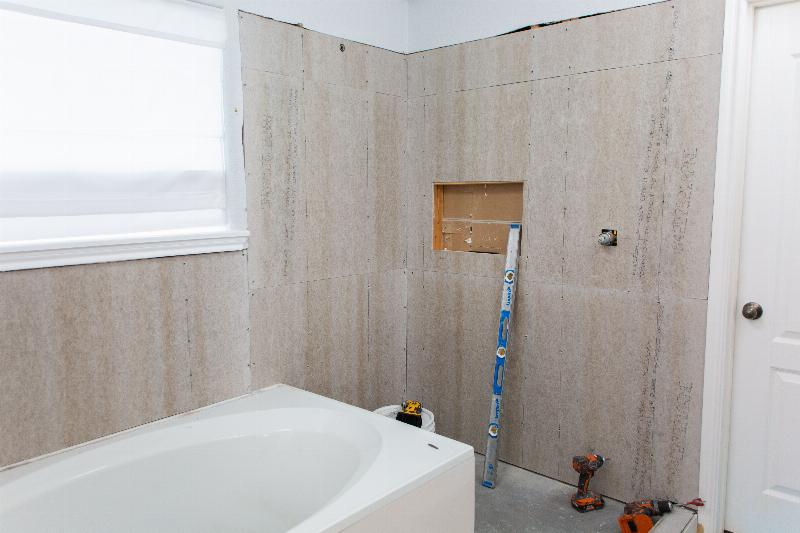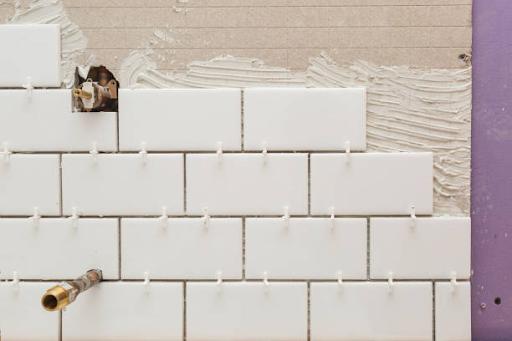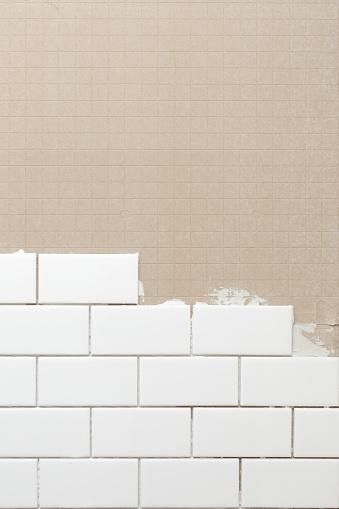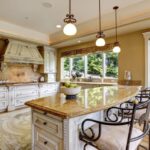What is the best backer board for a shower?
There are various varieties of backer boards. Choosing the finest backer board for the shower is our goal, each variety is unique. I’ll go through the different types of tile backer boards in this part.
| Cement board | Glass Mat Gypsum Board |
|---|---|
| Fiber Cement Board | Foam Shower Tile Backer Board |
| Tile backer board | Water-Resistant Drywall |
| Waterproof backer board |
|
Cement board
Inorganic minerals are used to make cement tile backer boards. They use Portland cement that has been aggregated and reinforced with fiberglass. Backer boards of this sort are intended to be both fire and impact resistant.
They are stiffer than other forms of backer boards. Polymers with a fiberglass mesh on the back and front of modern cement boards.
A cement board may be used in a variety of shower settings.
All applications use tile boards in conjunction with some form of waterproofing material. Liquid membrane, plastic ing, an uncoupling membrane, or a board that’s already waterproofed.
Cement Board and Plastic ing
A moisture barrier of 4 or 6 mils thick plastic is put over the wall studs. This is an efficient, low-cost, and popular application. The cement board is then placed over the plastic ing. It is then screwed to the wall studs, and a roll-on waterproofing membrane is put over the tile backer board. Thin-set mortar or mastic is used to apply tile on cement board.
Cement Board and a Liquid Membrane
The cement board is put onto the studs in this application. There is no plastic ing behind the cement board.
The cement board is rolled with a liquid waterproofing membrane and left to cure. The membrane is then covered with tile.
Cement Board and a Membrane
A cement board is put on the studs with no plastic ing behind it. A waterproof membrane is bonded to the cement board with a thin-set adhesive.
After the thin-set has dried, a thin-set is applied to the membrane.
Membrane-Faced Board Only
One form of tile backer board is constructed with a water-resistant face on both sides.
You don’t need to place a separate layer of plastic beneath the tile backer over the backer. The facing acts as an integrated waterproofing membrane.
Thin-set mortar is next placed on the board’s surface followed by tile and grout.
Glass Mat Gypsum Board:
The glass mat gypsum board is a multilayer product that has a gypsum inner core and a fiberglass coating on the front and rear.
These boards are water-resistant, making them ideal for shower walls. Glass mat gypsum boards are available at various pricing points.
Fiberglass-treated cores and coated facings beat traditional paper-faced gypsum board mold
Hanging paper-faced drywall before the structure has dried can be risky. No contractor wants to tear out damaged paper drywall.
Glass mat gypsum can tolerate inadvertent wetness. e,g. a sudden rainstorm, before the structure, has a roof and windows.
Pro-tip takeaway
it is best for expedited construction projects that need wallboard installation before the building envelope covering, particularly in storm-prone or humid locations.
| Pros | Cons |
|---|---|
| Fire resistant | Water damage |
| Versatility | Difficult to recycle |
| Durability |
|
| Low cost |
|
| Easy to install |
|
Cement fiber:
Fiber cement boards are available in a variety of variants from various manufacturers. Yet, they are all formed of cellulose fibers. As a result, the board becomes less brittle and more flexible.
Some boards are constructed from cellulose fibers and silica sand. Other boards are made from gypsum and cellulose fibers
One of the most appealing characteristics of fiber cement boards is their durability. Fiberboard siding, unlike wood siding, does not deteriorate or needs frequent repainting. It is resistant to fire and insects and performs well in natural calamities.
Some fiber cement board producers provide guarantees that extend up to 50 years. This demonstrates the material’s durability. Apart from being low maintenance, fiber cement boards are also energy efficient. To a lesser extent, it adds to house insulation.
Here are cement-fiber pros and cons
| Pros | Cons |
|---|---|
| Durable | Heavy |
| Withstands fire | Brittle—prone to chipping or cracking |
| Insect repellant | When chopped, it becomes dusty. |
| Excellent physical appearance | Price increase |
Pro tip Take away: Choose fiber cement products that contain a high percentage of post-consumer. For usage with fiber cement siding, always use low VOC paints, primers, and other sealants.
Read Also: How to Convert Powder Room to Full Bath
Foam Shower Tile Backer Board
Backer boards of this sort are constructed of extruded polystyrene foam. Some of them, however, are made of high-density polyisocyanurate closed-cell foam.
Each side of the board has a layer of fleece, cloth, or cement on it. In comparison, these boards are 80% lighter than cement boards. Not only that, but it is also more resistant to dampness.
Foam tile backer boards have two significant benefits.
A foam backer board has the advantage of being lightweight. It is lighter than any other form of backer board available. A 1/2-inch thick, 3 by 5-foot weighs approximately 7 1/2 pounds. (Build direct,2020)
Not only that, but it is also quite simple to cut. You may cut it using a utility knife. This simplifies the installation procedure.
Another advantage is that polyisocyanurate foam boards are waterproof. This eliminates the need for a waterproofing membrane on shower walls. Yet, you should still take certain precautions to keep the seams watertight.
Because of these characteristics, foam tile backer boards are popular.
The following are the primary advantages of utilizing foam backer boards:
- It is not heavy.
- It is watertight. Some are also vaporized retardants.
- Can be secured without the need
- for
- washers.
- Simple to cut and dust-free.
- Continuous usage in a steam shower is permitted.
When replacing an old damaged tile floor, a tile backer board floor is placed. It assists you in laying a sturdy foundation for the new tiles. As you are aware, there are several types of tile backer boards available. (Constructionor, 2021)
Each of these boards has a distinct purpose. If you have wood flooring, for example, you should use a cement tile board. Whatever you do, do not place over plywood, especially in wet locations like the bathroom.
This is due to the fact that plywood contracts and expands beneath the ceramic tile. As a result, tiles may become loose or fractured. Yet, when installed, a cement board provides a solid foundation that is bonded.
Tiler backer board
When replacing an old damaged tile floor, a tile backer board floor is placed. It assists you in laying a sturdy foundation for the new tiles. As you are aware, there are several types of tile backer boards available.
Each of these boards has a distinct purpose. If you have wood flooring, for example, you should use a cement tile board. Whatever you do, do not place over plywood, especially in wet locations like the bathroom.
This is due to the fact that plywood contracts and expands beneath the ceramic tile. As a result, tiles may become loose or fractured. Yet, when installed, a cement board provides a solid foundation that is bonded.
Waterproof backer board:
There is a need to grasp the distinction between waterproofing and water-resistant. Because many of you are unsure about the distinction, I am here to help.
Both phrases may sound similar, yet they are approached and defined. Waterproofing entails adding an extra layer to the outer wall or floor. When the top layer is not water-resistant, this is critical.
A waterproof layer, for example, is required to protect a wooden wall from water damage. The same holds true for less dense cement walls. Water-resistant, also, refers to the capacity to endure water.
A waterproof tile backer board is used in showers and bathrooms. Any moist area should have an extra layer of waterproofing on the floor and walls. Check the material quality and capabilities before purchasing the waterproof cover. (Labor Matters, 2022)
Waterproofing cement board
When the boards are not waterproof, waterproofing cement boards is critical.
Apply a sealer to porous materials. This prevents moisture from leaking through to the wood or metal studs beneath the tile. In case you were unaware, grout and tile are not waterproof. Even if you use a sealer, they might let in some moisture.
It is critical to safeguard the components beneath against vapor and water damage. Fiberglass-coated gypsum board eliminates the need for any type of moisture barrier.
In this instance, even so, a concrete backer board may be ideal. This is because it is more durable and stronger than a gypsum board. A water membrane must be fitted beneath it.
| Pros | cons |
|---|---|
| It is possible to reduce water absorption. | The polyurethane protective layer should be limited in its versatility |
| Preventing fractures from forming on the concrete floor | The polyurethane protective covering has a limited pot life. |
| The appliance is simple. | The impermeable floor coating allows water to develop beneath it. |
| It will extend the life of a solid structure | The inadequacy of cementation waterproofing to maintain fissures leads to more leakage. |
| It keeps reinforcement from corroding. |
|
| prevents moisture from entering the structure |
|
| It provides a healthy atmosphere. |
|
Are you ready to choose the best backboard for your shower?
The best backer board required for your shower. The most obvious advantage of any backer board is that it serves as a stable bonding surface for your tile. That being stated, there are several types of backer boards available, each of which is unique. Smart Remodeling LLC will teach you all you need to know.
Our specialists will also provide the best backer board alternatives. We assist in selecting the most appropriate and cost-effective backer board for you.
We will connect you with one of our qualified backer board specialists. Request a free consultation with one of our experts right now! Please contact us at 832 800 8889 or sales@smartremodelingllc.com.
Call Smart Remodeling LLC immediately for the best tiles in Houston.










